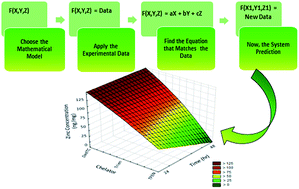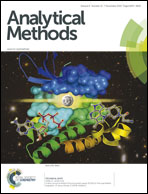General chelating action of copper, zinc and iron in mammalian cells†
Abstract
The high-accuracy determination of trace metals in biological systems is a crucial step for the elucidation of their role in these systems. We investigated the influence of the most commonly used intracellular metal chelators, N,N,N′,N′-tetrakis(2-pyridylmethyl)ethylenediamine (TPEN), triethylenetetramine (Trien) and N,N-diethyldithiocarbamate (DeDTC), on the concentration of Cu, Fe and Zn in mammalian cells. We analyzed the influence of the chelator type, concentration and time of exposure on cultured cells. The obtained data were used to formulate a general equation for evaluating how each metal concentration is influenced by experimental conditions. For this purpose, an analytical method was developed to determine Cu, Fe and Zn concentrations in cells using graphite furnace atomic absorption spectroscopy with low sample handling and direct injection of the solid (SSGF-AAS). We used non-adherent human lymphoma U937 cells as a model, and these cells received each chelator at different concentrations and exposure times. We used a factorial design to determine models to describe Cu, Fe and Zn concentrations in cells. Analyses using cubic equation models showed that the chelator type is the most relevant factor for the three metals. Our results suggest that chelation therapy in cultured cells changes intracellular Cu, Fe and Zn concentrations in a more complex manner than currently described in the literature. For Cu, Zn and Fe variations inside the cell, the chelator type is important, and for zinc, the time of exposure and the concentration of the chelator are also important.


 Please wait while we load your content...
Please wait while we load your content...